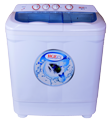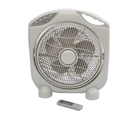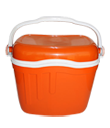A Beginner’s Guide to Paper Wallets
You’ll need a secure place, like a fireproof and waterproof safe, to keep them in. Depending on the fair market value of the cryptocurrency you’re placing in a paper wallet, you might consider safe deposit boxes at your bank or financial institution. Printers are not always reliable, and any problems while you’re printing can lead to the loss of your keys and cryptocurrency.
They come in a range of colors and finishes to suit various personal preferences and styles. Whether you prefer a classic black RFID slim wallet or a vibrant and eye-catching design, there is a minimalist wallet to match your taste. This allows you to carry your paper wallet securely while making a fashion statement that reflects your personality. A paper wallet is a general term given to a piece of paper with a private key (or seed phrase) written on it. It’s considered to be one of the best practices for keeping your private key safe.
A suitable variant of a crypto wallet could help you with security of your digital assets, and paper wallets are one of them. The following discussion tries to describe “what is a paper wallet” in detail alongside its working and processes to set up paper wallets. Throughout this comprehensive guide, we’ve explored the mysterious world of paper wallets, delving into their creation process, historical evolution, and current practical use cases. We’ve also discussed the risks and limitations of paper wallets and compared them to other popular storage methods, such as hot wallets and the increasingly popular hardware wallets. One of the most significant risks of paper wallets is their susceptibility to physical damage from environmental factors, such as water, heat, and light exposure. Over time, these factors can cause the paper to degrade, and the ink to print the private keys may fade or smudge.
Paper wallets were an essential part of the cryptocurrency development journey. Like any other fledgling industry, this fascinating invention became popular and swiftly faded once the market found a better alternative. While it doesn’t make much sense to utilise them today, paper wallets were massive contributors to progressing the industry forward http://speeder-gt.chat.ru/sceplenie.html and introducing a concept of cold storage in crypto. Thus, paper wallets have claimed their rightful place in the history of cryptocurrencies. While both are used for storing cryptocurrencies offline, there are a few differences. Cold wallets have a physical form, they are easier to use, and are compatible with most cryptocurrencies.
- They can also be exposed during their creation process, potentially being compromised before even being used.
- I have invested on Bitcoin and some other altcoins in different coin exchangers.
- Once you’ve created your paper wallet, consider how you’re going to store it.
- They accommodate 8-16 cards, cash, and include RFID protection for added safety.
- It is important to read and understand the risks of this investment which are explained in detail in
this document
.
For using gasless functionality you can either use biconomy or openzeppelin defender. You can get the keys for biconomy by following the steps in this guide and this one for openzeppelin. The keys can also take the form of a QR code, instead of actual alphanumeric characters. Mark contributions as unhelpful if you find them irrelevant or not valuable to the article. Software evangelist for blockchain technologies; reducing friction in online transactions, bridging gaps between marketing, sales and customer success.
Often it will have QR codes so that you can quickly scan them and add the keys into a software wallet to make a transaction. Paper wallets represent an offline, physical key storage method, whereas hot wallets are online, digital wallets. A paper wallet is a physical document that securely stores the public and private keys necessary to manage cryptocurrency transactions. Contrasting its digital counterparts, a paper wallet stands out due to its tangible and offline nature, ensuring an intrinsic resistance to online hacking attempts. On the other hand, cold storage wallets ensure the storage of your private keys in completely offline environments.
They offer the same sense of security as paper wallets, but unlike paper wallets, Material is built to endure any form of physical damage. Made out of AISI 304L stainless steel, these wallets are fireproof, waterproof, and shockproof, meaning that you never need to worry about them being damaged. The objective of keeping a paper wallet is to keep the private key safe whether its for a Bitcoin paper wallet or one designed to hold any other cryptocurrency.
Ensure that your paper wallet is printed with a high-quality inkjet printed to ensure that the characters on the paper don’t fade or bleed over time. The term Bitcoin wallet is a generic term for any type of crypto wallet, whether a paper wallet, a software wallet or any type of online wallet or hot wallet. The only distinguishing factor is that the digital wallet only holds Bitcoin. To create a paper wallet, you can use various online services or generate it offline using open-source software. Simply follow the instructions provided by the chosen service or software to generate your unique wallet address and keys. By combining these advanced security features – RFID technology and cryogenic storage – individuals can enjoy enhanced protection for their cryptocurrency assets.
A paper wallet is exactly what it sounds like – a piece of paper on which all of your necessary info is either printed or written. It usually has your public and private keys on it, which is what gives you the ability to send crypto. These paper wallets have your private keys, which used to manage your crypto assets on the blockchain. The main reason for using a paper wallet is to create a wallet that never connects to the Internet.
In the early 2010s, paper wallets were introduced as a foolproof way to secure private and public keys. Paper wallets were meant to take the private keys offline and store them on a piece of http://4krim.ru/massandra/dostoprim_massandra paper entirely inaccessible to hackers or malicious attackers. Hence, caution and thorough security measures are essential throughout the creation of paper wallets in the crypto ecosystem.
Firstly, it prevents potential thieves from skimming your card information by simply passing by you with a portable card reader. The RFID chip in the wallet requires close proximity to be read, making it difficult for criminals to gain access to your sensitive data. Beyond functionality, minimalist wallets are known for their stylish designs.
The loss rates for physical items can be high, especially for something as small and delicate as a piece of paper. Take this report by Chainalysis as a warning sign, as their research states that up to 23% of Bitcoin has been lost forever because of lost or forgotten keys. Your private keys, are a highly sensitive sequence of words that are needed for you to access your crypto. Now we can transform this generated wallet into a paper wallet choosing the option in the menu of the site. If you don’t set up a change address before sending funds from a paper wallet, the leftover funds will go to waste.
Here are the steps you would have to follow for a secure approach to the creation of paper wallets. Depending on the way the crypto wallets store your private keys, you can find two distinct variations of crypto wallets. The two categories of crypto wallets include hot storage wallets and cold storage wallets.
After the format and installation procedure, you need to unzip the BitAddress software file you had downloaded earlier and copy it in your flash drive. Investing in cryptoassets is not regulated, may not be suitable for retail investors and the http://gorojanin.mypage.ru/?page=8 entire amount invested may be lost. It is important to read and understand the risks of this investment which are explained in detail in
this document
. Follow all the security steps detailed here and remember, not your keys, not your crypto.








